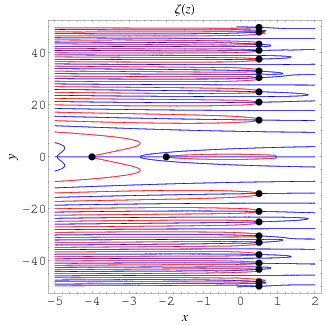But there is still more...............b/c....with 0.25............u have the two primes............2 and 5...............which cut out 6 out of 10 numbers from being prime.....................2 cuts out every other number............every even positive number........(like every negative even integers on the X axis have zeroes)................5 cuts out the middle number..........in any 10 digit sequence.....from a 0 to a zero...............above ten.........above single digits..........a dividing line of sorts..............single digit primes are different.............like the critical line itself...........1/2...........the 1 stands for single digits.......if u imagine it does..................2 for double digits...........all the 1st 25 primes............are in either in single digits or double digits........97......the last prime..........under 100..........in double digits........is like 7 and 9..........backwards...........4 d...................two 3ds....................one right up........one inverted.........wave interference.........................
9 + 7 = 16.................the 1st 25 primes sum to 1060.........like a garbled gold ratio...........60 - 10 = 50..................like the line itself......the critical one.....1/2.........1/2 = 0.5....................2 and 5...........the exact TWO primes who cut out 6 out of 10 numbers from being prime...............as END digits.......and leave only 1, 3, 7 and 9.............fractal patterns..........................coincidence............that those exact two primes.......are in 1/4..........its dec amount.......1/4 = 0.25.........................man oh man................not bad for a toothless, homeless man, eh???
The plots above show the real and imaginary parts of
 The position of the complex zeros can be seen slightly more easily by plotting the contours of zero real (red) and imaginary (blue) parts, as illustrated above. The zeros (indicated as black dots) occur where the curves intersect.
The position of the complex zeros can be seen slightly more easily by plotting the contours of zero real (red) and imaginary (blue) parts, as illustrated above. The zeros (indicated as black dots) occur where the curves intersect.
No comments:
Post a Comment